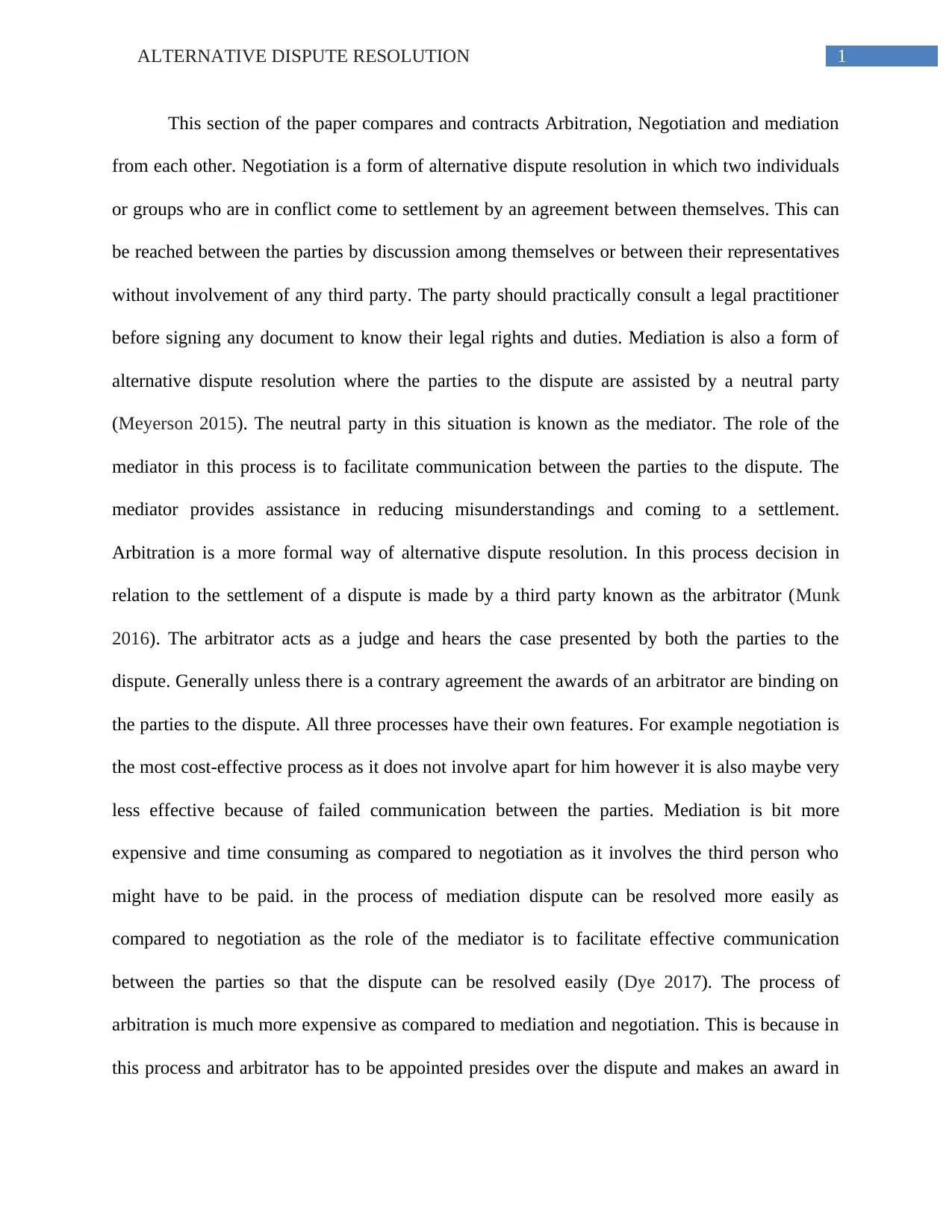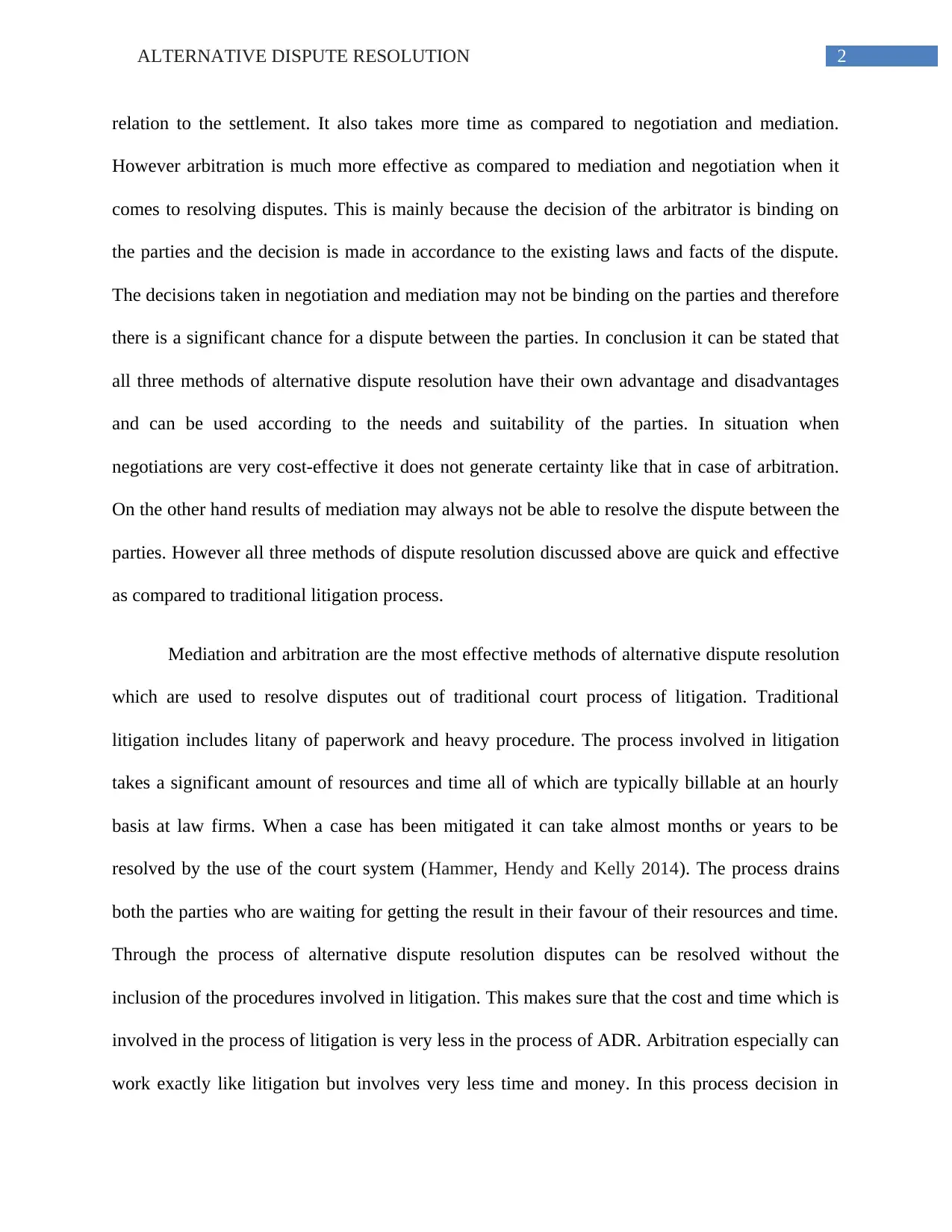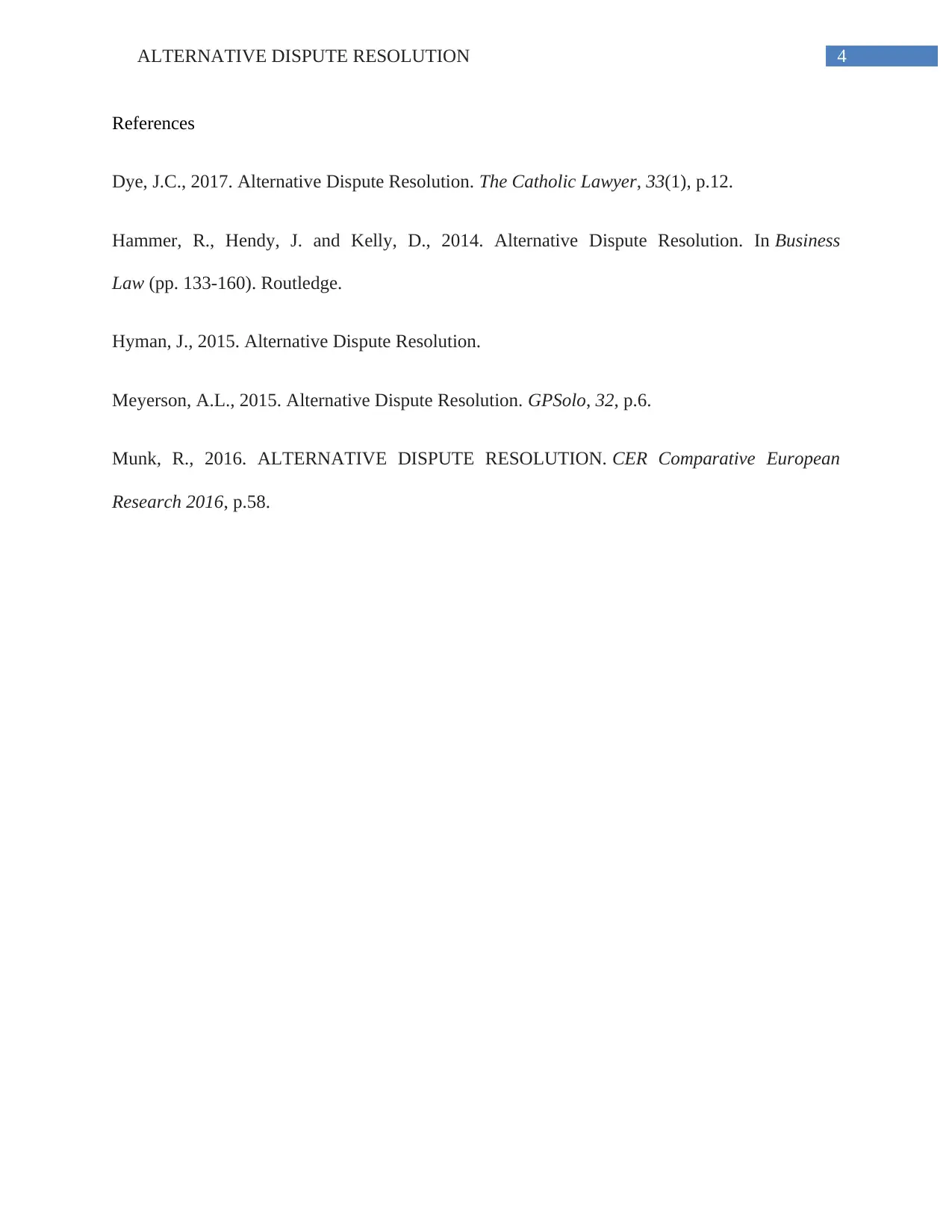Alternative Dispute Resolution: Comparing Methods & Litigation
VerifiedAdded on 2023/06/03
|5
|960
|222
Essay
AI Summary
This essay provides a comparative analysis of Arbitration, Negotiation, and Mediation as methods of Alternative Dispute Resolution (ADR). It elucidates the distinct features, advantages, and disadvantages of each approach. Negotiation is presented as a cost-effective but potentially less effective method due to possible communication failures, while mediation offers a more facilitated communication process with the assistance of a neutral mediator. Arbitration is described as a more formal and binding process, albeit more expensive and time-consuming. The essay emphasizes that the choice of method depends on the specific needs and suitability of the parties involved. Furthermore, it contrasts ADR with traditional litigation, highlighting ADR's efficiency in terms of cost and time savings. The conclusion underscores the value of mediation and arbitration as effective alternatives to the complexities and resource demands of traditional court proceedings. Desklib offers a platform to explore more such assignments and past papers.
1 out of 5












![[object Object]](/_next/static/media/star-bottom.7253800d.svg)